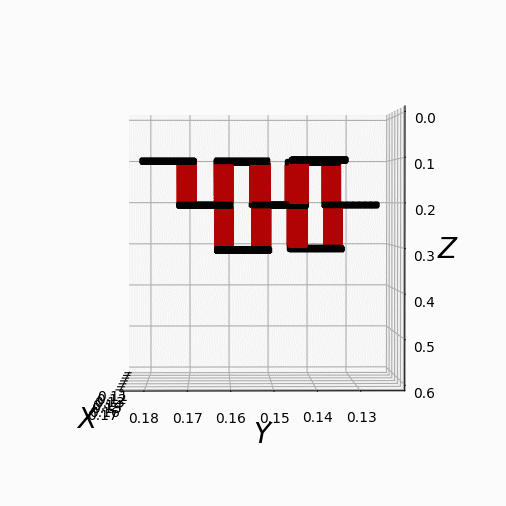Designing 3D Multip Processor Compute Architectures (Masters Thesis)

Research findings are part of work published in Design Automation Conference (DAC) 2019.
Thesis can be found HERE
Summary
For my Master Thesis in computer science at the University of Hawaii at Manoa I wrote a simulation to construct Integrated 3D Multi-chip systems. Under the guidance of my advisor Prof. Henri Casanova and in collaboration with Prof. Michihiro Koibuchi and his KoiLab team I developed designs for single systems containing multiple microprocessor chips. The advantage of a single multi-chip system is high computational power and low latency which is advantageous for running parallel applications. Common cluster architecture offer high computational power however, microprocessor chips are not contained within one unit and a network is required for communication. The systems we design contain many microprocessor chips in close proximity to one another in one system and they communicate via either wired or unwired connections. The inter-chip connections in our systems offer a significantly greater bandwidth than those presented in common cluster architecture such as Gigabit Ethernet or Infiniband.
The challenges we had when constructing these systems is heat build up due to chips in close proximity clocked at high frequencies. Spacing out the chips is a solution that leads to less heat build up but it leads to a sparser inter-chip network which can be detrimental for communication. Trade-offs exists and we needed to build chip layouts that offer a good network, low operating temperature, and high chip clock frequencies. This is a multi-variate optimization problem and we employed heuristics to help. We utilize simulation to implement our heuristics, generate heat profiles for constructed layouts, and evaluate application performance on constructed layouts.
Contributions
The layout construction simulation was built using Python 2.7 and started by my advisor. I was tasked with completing the simulation code and implementing our heuristic to generate the best layouts possible. Our heuristic is based off a greedy approach in which it evaluates the layouts and greedily chooses the layouts with the best metrics(network, temperature, and power). The simulator, known as Hotspot, which evaluates the layout temperature is slow and is the bottleneck of our overall simulation.
Significant effort went into the acceleration of Hotspot’s runtime. The Hotspot code is written in C and thus we tried to use parallel programming tools and techniques such as OpenMP and Message Passing Interface, MPI. These attempts led to little improvement in the runtime because Hotspot preforms a lengthy large sparse, LU factorization. Hotspot is called many times by our heuristic in order to get temperature metrics. We alleviated some of the bottle neck by making parallel calls to Hotspot since we cannot speed Hotspot up directly. We first used the python multiprocessing modules but encountered errors when we scaled up to run our simulation on many core machines. We finally settled on using MPI via the mpi4py module which helped with speed up of the overall simulation runtime.
With access to two 32 core and one 16 core machines we were able to run our heuristic simulation faster. This opened up doors for me to implement other features to improve the resulting layouts. The rotating image/GIF is an example of one of the layout designs we build with our heuristic and simulation. The black grids represent a square microprocessor chip and the red sections are inter-chip connection points where high bandwidth communication happens. This layout is one of many and they all have good network characteristics, high operating chip frequencies, and cool operating temperatures.
Learned
This project allowed me to become comfortable and well versed in the Python programming language. During the course of my thesis, I learned to design and simulate numerous experiments to gather data to build the best possible layouts. I utilized remote machines and a Cray cluster to run simulations which helped me to become more familiar with Linux/UNIX, ssh, and bash/shell scripting. The utilization of MPI helped me gain experience in developing, working with, and debugging parallel code. My concurrent and parallel programming skills greatly improved during the course of my thesis. My ability to write scientifically and technically as well as present my findings were skills that I attribute to my thesis work.
